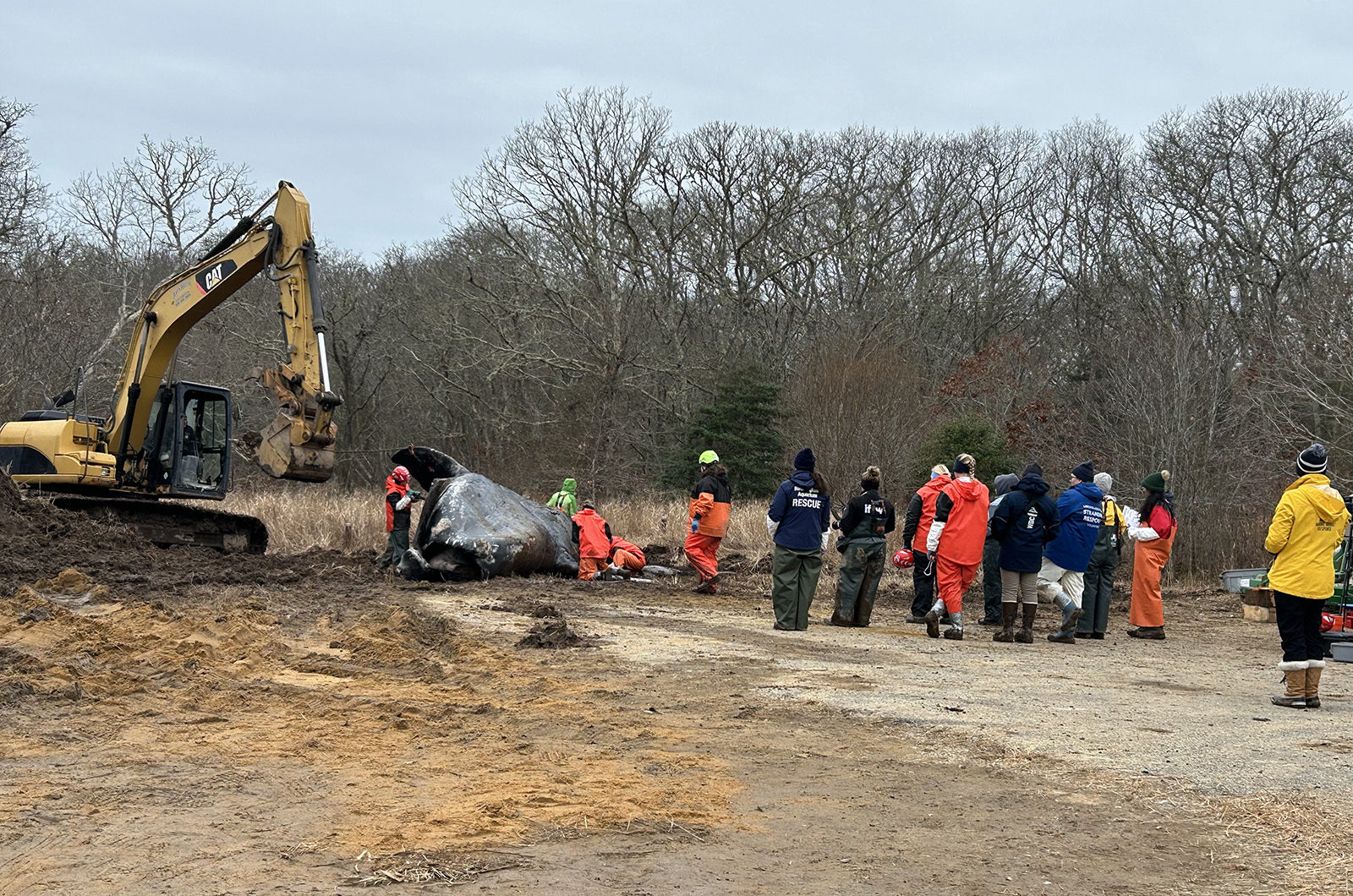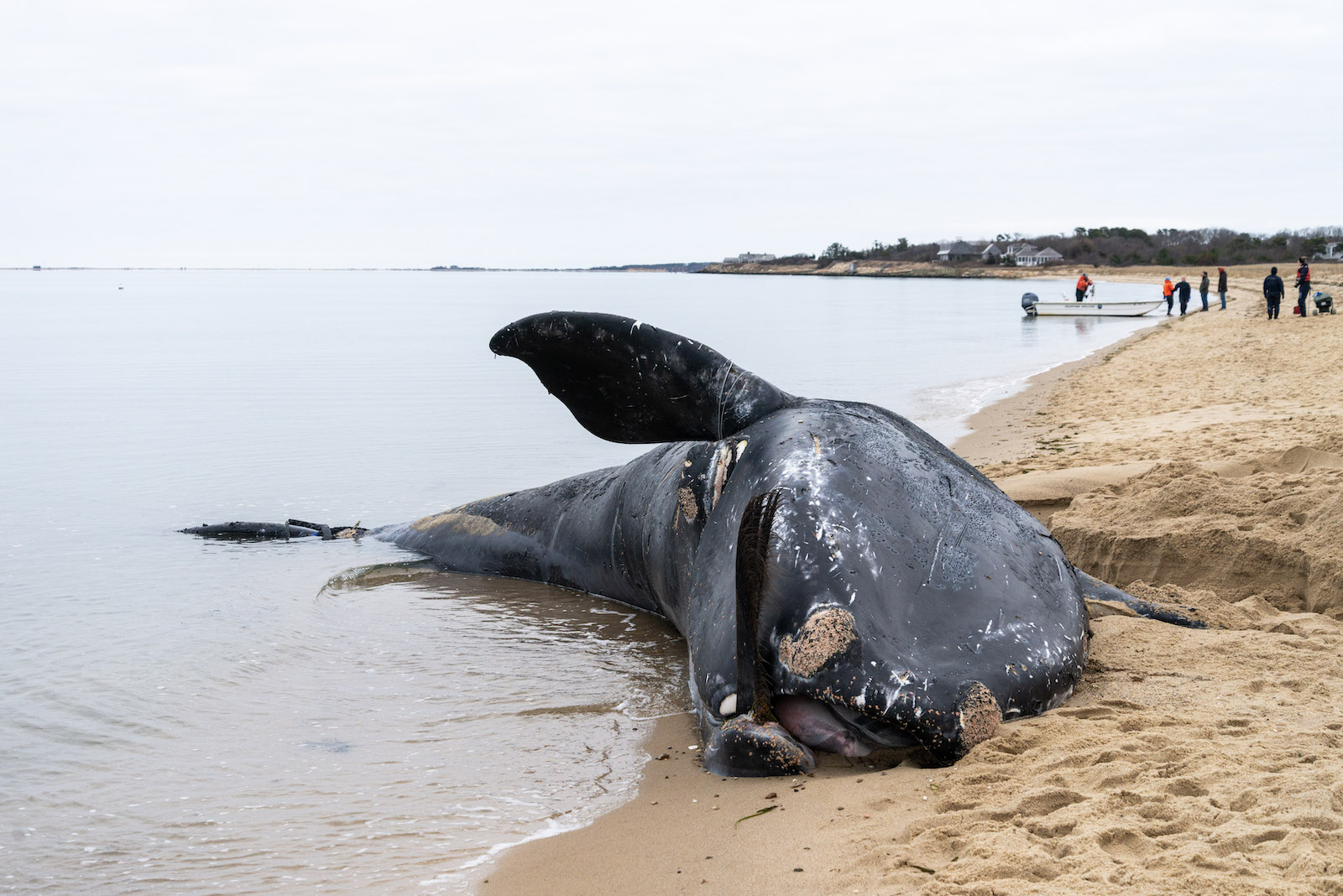Scientists at the New England Aquarium Friday determined the dead North Atlantic right whale that washed up on the Vineyard this week was entangled in fishing gear going back to 2022.
The 3-year-old female whale was seen entangled in the Gulf of St. Lawrence in August 2022, and attempts to free it off Cape Cod last year were unsuccessful. The whale was also seen in poor health in the Gulf of St. Lawrence in June 2023, still constricted by a rope that had become deeply embedded around its tail.
The aquarium Friday also learned the dead whale, dubbed Catalog 5120, was the only known daughter of a female right whale named Squilla.
A walker on the beach at Cow Bay in Edgartown found the whale washed up in the surf Sunday and scientists performed a necropsy Thursday after a prolonged effort to get the 20,000-pound whale to tribal land in Aquinnah.
The young female whale’s death has been distressing for conservationists as the right whale species continues to inch toward extinction.
There are fewer than 360 North Atlantic right whales left, and this was the eighth fishing gear entanglement injury recorded in the whale’s family tree, according to the aquarium. Thirty-seven right whales have died since 2017, with another 34 seriously injured and 51 more in poor condition.
“The loss of this juvenile female is not only sad, but also represents the loss of tremendous potential for this species,” said Philip Hamilton, a senior scientist with the aquarium. “We know of one female right whale in this population who has at least 30 descendants—calves, grandcalves, and great grandcalves. A small consolation is that #5120’s grandmother, mother and two aunts are still alive, so her female lineage will survive.”
Ten organizations sent dozens of experts to assist with the post-mortem investigation into the animal’s death, said National Oceanic and Atmospheric Administration spokesperson Andrea Gomez. The International Fund for Animal Welfare coordinated the efforts.
Final results from the necropsy could take up to two months to be completed, Ms. Gomez said, though preliminary findings indicate the whale was chronically entangeled. There were no signs of blunt force trauma.
The necropsy involved breaking down the whale and taking hundreds of samples off-Island for analysis. Scientists crowded around the body, wielding curved knives and donning thick, waterproof garments as they began to slice into the blubber.
Others sharpened yet more implements further back from the carcass, ready to swap out as its thick skin dulled the first round of blades, while the engine of a large yellow excavator thrummed in the background.
The body, said Aquinnah tribal resources field technician Andrew Karlinsky, had arrived in Aquinnah at around 11:30 p.m. on Wednesday, on the back of a flatbed truck. The whale’s flippers, he said, couldn’t be contained on the vehicle, necessitating three police escorts on the journey through Vineyard Haven, West Tisbury, Chilmark and Aquinnah.
Upon its arrival to tribal land off Old South Road, Wampanoag Tribe of Gay Head (Aquinnah) Medicine Man Jason Baird led a ceremony in honor of the creature, joined by a group of tribal elders. A prayer was said, a song was sung, and the group broke for an early morning the next day.
“Indigenous people, Wampanoag people, we are part of this environment,” said Mr. Baird. “For us in the not-so distant past, that would be our grocery store.”
Gradually, investigators began to disassemble the carcass, pulling off a flipper, then a thick sheet of blubber with the help of the excavator. The bones, meanwhile, were put to the side, after having been claimed by the tribe.
“We would carve ornaments from bone, and tools from bone,” Mr. Baird said. “A lot of things our people would do, and may yet do.”
Aside from the bones, though, and the samples sent off for further study, most of the whale would remain there, in a grave dug in Aquinnah, its final resting place.









Comments (7)
Comments
Comment policy »